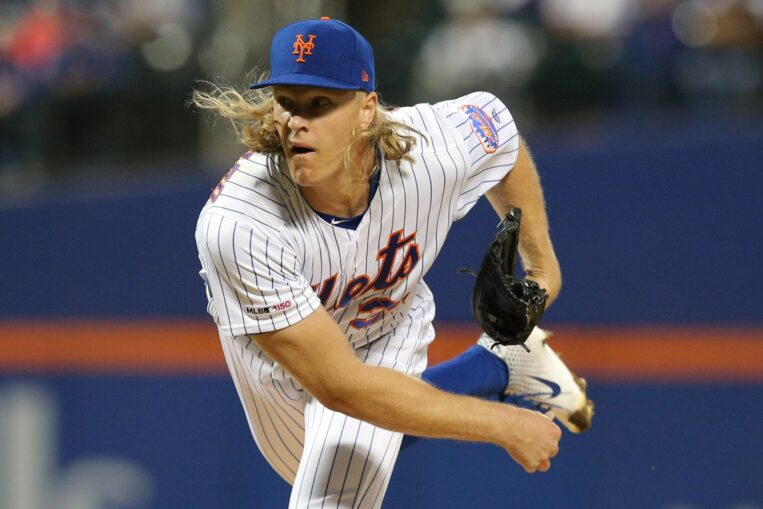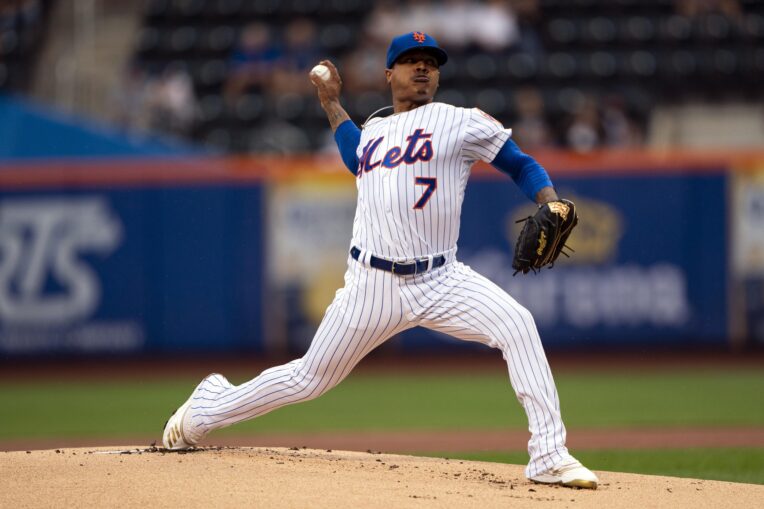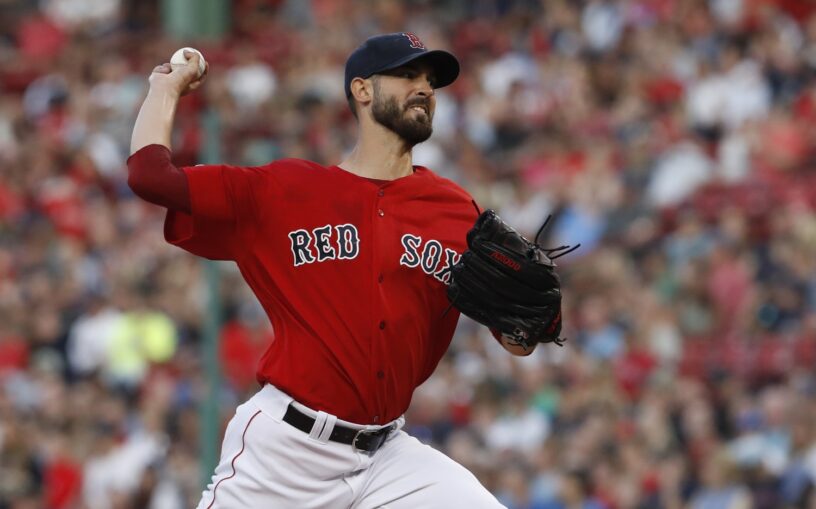
Every offseason, it seems there are talks about the Mets having the best starting rotation in baseball for the upcoming season, but each of those discussions always contains the word “if.”
Matters are no different at the moment, as New York certainly has the potential to boast the top starting rotation in 2020 and be even better than they were in 2019. But a lot of things need to break right for them. A lot of those “ifs” need to actually happen.
Historically speaking, the Mets have always had excellent starting pitching. But the recent talks of their excellent starting pitching dates way back to the days of the Dark Knight, Matt Harvey. The talks grew with the subsequent debuts of Zack Wheeler, Jacob deGrom, Noah Syndergaard and Steven Matz. By 2016, with a pennant under their belts, there was the possibility of the Mets having an ace slotted at each spot in the rotation for years to come.
While it didn’t quite blow up in the fashion of Generation K, the rotation did not boast five aces. Matz has established himself as a mid-rotation to back end starter, Wheeler eventually stayed healthy enough to put it all together before heading down the New Jersey Turnpike to the Phillies, and Syndergaard had been excellent when healthy, but had a disappointing 2019 season. As for Harvey, well, he’s still in free agent limbo after two major arm injuries.
Jacob deGrom has without question been the most successful of those Mets starters. The right-hander has cemented himself as one of, if not the, best pitchers in baseball with his second-consecutive Cy Young award in 2019. DeGrom led the league with 255 punch outs and posted a career-best 11.3 K/9 to go along with a 2.43 ERA, 167 ERA+ and 2.67 FIP. There’s every reason to believe that deGrom has a legitimate shot at a third-consecutive Cy Young award in 2020, something that has only been accomplished by Greg Maddux (1992-95) and Randy Johnson (1999-2002) who each won four straight.
Unfortunately, after deGrom the Mets rotation is loaded with question marks entering the 2020 season. You could argue this was the case entering the 2019 season, a year which saw Mets starters rank seventh in ERA with a 3.84 mark. That was the lowest of any national league team that didn’t make the playoffs and lower than that of five playoff teams.
This came despite up-and-down seasons from Syndergaard and Matz, but the Mets were also lucky enough to go against their usual trend of injuries and maintain a healthy starting rotation throughout the campaign. Four Mets pitchers started at least 30 games in 2019, the first time that has happened since 2003. The Mets can’t count on having that much luck with its health again in 2020. General Manager Brodie Van Wagenen added low risk, high reward starters Michael Wacha and Rick Porcello this offseason to bolster the depth of the rotation.
Wacha and Porcello will likely compete for the back end spot in the rotation, with Syndergaard and Stroman set to compose the middle of the rotation. Syndergaard has served as a very good No. 2 starter behind deGrom when healthy, sans last year. His 4.28 ERA, 95 ERA+, 3.60 FIP and 1.234 WHIP in 2019 all marked career worsts. Syndergaard also allowed 94 earned, the most of any pitcher in the National League. The bright spot is that he also set career highs with 32 starts and 197.2 innings pitched and still put up more than 4 fWAR.
Syndergaard, who is still only 27-years-old, still has the potential and talent to win a Cy Young award of his own. Every pitcher is due to have a down year at some point in their career. If Syndergaard can replicate the health he had in 2019 while reverting back to the kind of pitcher he was prior to last season, the 1-2 punch of deGrom and Syndergaard could be one of the best in baseball.

Stroman will serve as the team’s No. 3 starter and will also essentially act as Wheeler’s replacement for the 2020 season. Like Syndergaard, Stroman has been a Cy Young contender when he is not hampered by injuries. In his six years in the major leagues, Stroman has started at least 30 games in only three. But Wheeler has started at least 30 games in only two of his five seasons, not including 2015-16 when he didn’t throw a single pitch. Stroman doesn’t just have an edge on Wheeler in terms of health, he could have as much upside as Wheeler. Stroman has posted single season best marks with a 145 ERA+ in 2017 and a 2.84 FIP as a rookie in 2014. Wheeler’s single season bests in those categories are a 112 ERA+ and 3.25 FIP in 2018. While it certainly would have been nice to have retained Wheeler along with Stroman, Stroman is more than capable of giving the Mets a strong No. 3 starter to soften the blow of losing Wheeler.
As was the case heading into the 2019 season, it’s anyone’s guess what kind of production the Mets will get out of the No. 4 and 5 spots in its rotation. It’s up in the air if Steven Matz will be a consistently effective starter after another average season. He followed his 3.97 ERA, 94 ERA+ and 4.62 FIP campaign in 2018 with a 4.21 ERA, 96 ERA+ and 4.60 FIP performance in 2019. If Matz struggles, it may see him make a transition to the bullpen or get traded to another team, which has been floated around this winter.
If one of those scenarios arises, the final two spots will be filled in by Rick Porcello and Michael Wacha. These are two pitchers who have had success in their MLB careers; Wacha won NLCS MVP in 2013 and was an All-Star in 2015, while Porcello claimed a Cy Young award in 2016. But it’s safe to assume that the Mets won’t get that same kind of production from either guy in 2020.
Both are coming off of very disappointing seasons, with Wacha posting a 4.76 ERA, 90 ERA+, 5.61 FIP and 1.563 WHIP in 2019 and Porcello boasting a 5.52 ERA, 87 ERA+, 4.76 FIP and 1.394 WHIP. Wacha has struggled since his early days with St. Louis, but did post a 3.20 ERA and 121 ERA+ in 2018. However, Wacha only made 15 starts that season due to a left oblique strain. As for Porcello, he has only had one year where he posted an ERA+ above 100 since his Cy Young season, but did have a serviceable campaign in 2018 where he had 2.4 fWAR. At best, these two pitchers will turn the clock back a few years and serve as two solid starters at the back end of the rotation. At worst, both pitchers continue the struggles that have plagued them the last few seasons and don’t make it through the year with the team.

While it’s easier for Mets fans to see the latter situation playing out, those same folks likely expected the same thing to happen with Jason Vargas heading into the 2019 season. Vargas had a putrid 2018, posting a 5.77 ERA, 65 ERA+ and 5.02 FIP in 20 starts, but was a solid No. 5 starter during his time with the Mets in 2019. In 18 starts he had a 4.01 ERA and 101 ERA+ and was dubbed “Vargace” before being traded to the Phillies. If Vargas managed to surprise people with his steady production after a disastrous season, it’s not far-fetched to think Wacha and/or Porcello could do the same.
The 2020 starting rotation is going to look significantly different than it did in 2019, despite the return of big names at the front of the rotation. There’s no reason to think deGrom won’t be able to maintain his dominance in 2020, and there’s every reason to believe that Syndergaard will have a bounce back season. After those two is where the changes will be noticed. Stroman has the potential to round out a terrific trio of starting pitchers, provided he stays healthy. It’s hard to predict who will make up the final two spots (especially the last one) in the rotation and how well they will do. Matz is still young enough to get it together and both Wacha and Porcello are capable of regaining some semblance of their old forms. But it’s also not difficult to see all three of them struggling next season.
There are plenty of reasons to believe the 2020 starting rotation will be better than it was in 2019, but there are also plenty of reasons to believe it will be worse. I think the front end of the rotation will be better than it was in 2019 with another great season from deGrom, a return to form for Syndergaard and solid production from Stroman. However, I have a tough time seeing Matz, Wacha and Porcello finding sustained success in the back end of the rotation, and I think that area will be worse than it was last year. But, as always, “if” things break right for the Mets, the rotation will see an improvement from last year and could be a strong suit.














